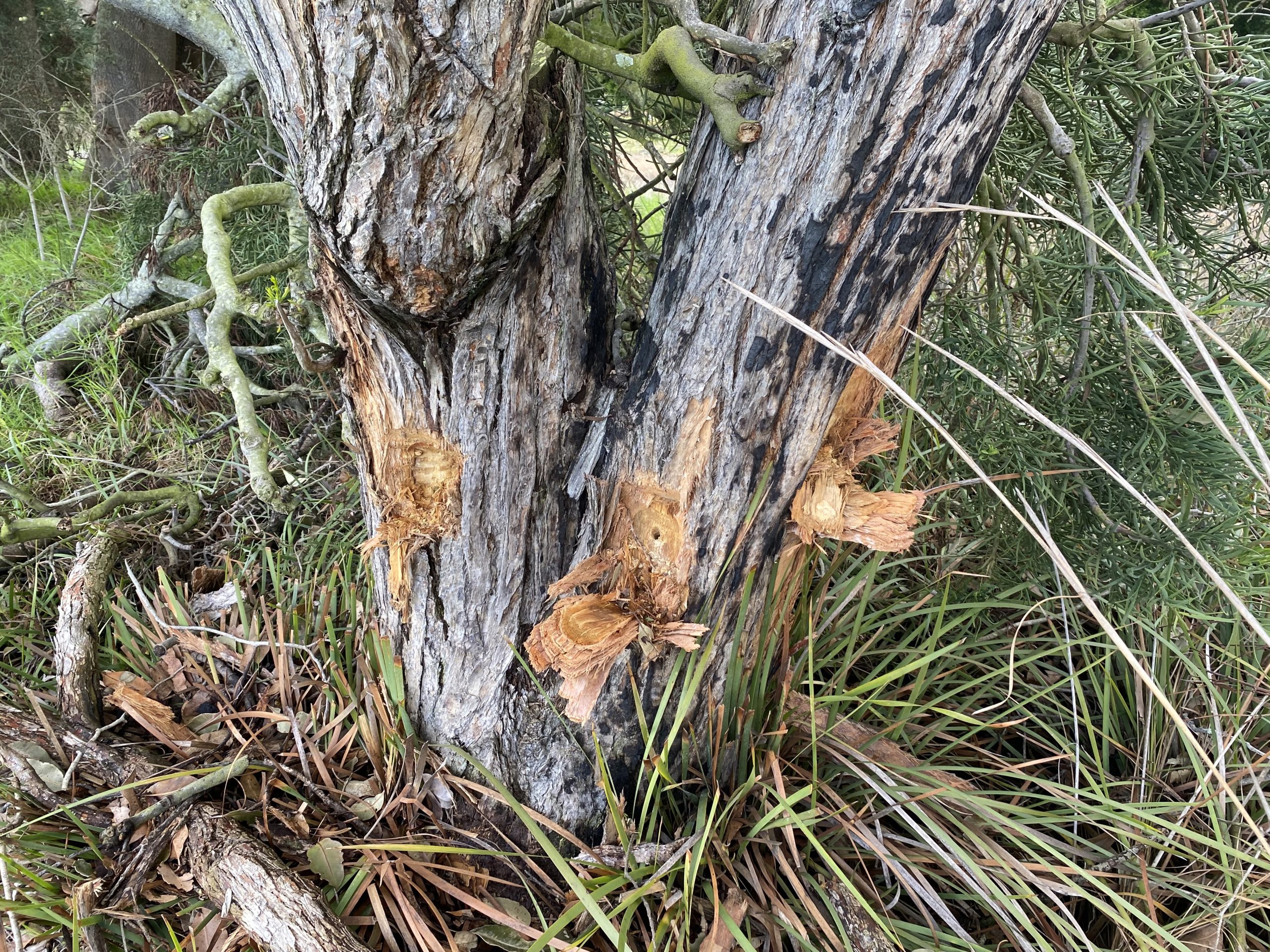
A Western Australian farmer has admitted to deliberately poisoning almost 70 native trees on public land near the state’s south coast.
Sixty-nine native Jarrah and Marri trees, located on the side of an unpaved road in Redmond, near Albany, were discovered with holes drilled into them and evidence of the common herbicide glyphosate.
On Tuesday, Albany Council denounced the “reprehensible act”, with Mayor Greg Stocks calling it “an act of vandalism on a large scale”.
It said some of the impacted trees were “very large”, and were potential breeding trees for the three threatened black cockatoo species in this region.
READ MORE: Everything you need to know about this year’s Olympic Games
“The poisoning of these 69 trees in Redmond is not just an attack on the environment but also undermines community efforts to preserve Albany’s natural beauty,” Stocks said.
“The city strongly condemns all acts of vandalism, particularly the extensive destruction of our natural flora, which is deeply disappointing to the both the city and the community.”
Peter Mullally has since admitted to the poisoning, claiming he did so to mitigate bushfire risk on his neighbouring property, ABC Great Southern reported.
Mullally said he was extremely remorseful and offered to revegetate the area.
The City of Albany acknowledged Mullally’s admission in a statement to 9News.
“The city acknowledges that the individual who poisoned the trees in Redmond has come forward,” a spokesperson said.
“This matter is now with the State and Federal departments for further investigation.”
Penalties for the offence can total up to $250,000.
Some of the trees appear to have turned brown and died when they were discovered by council staff.
Despite the damage, consulting arborist Royce Turner implored the council to turn the poisoning into a positive.
READ MORE: Heartwarming images of Cleo Smith shared by family
“I really would promote trying to make the best out of it – they need to use what they’ve got left as habitat for as long as they can,” Turner said.
“Even though they’ve been poisoned, they’re perfectly good, they can be pruned and greened up quite quickly and made into habitat.
“Habitat pruning is a really really important key to fixing that issue down there as the trees decline.”
He said the poisoned trees could continue to stand for another 10 years.
“Once the trees die, they can still provide habitat,” he said.
“What I would recommend is to leave the situation alone as long as they can, continue to monitor and make it safe, there may be some greenery that can be saved.”
The City of Albany said it intended to do exactly that.
“It is likely that trees will remain in place as they are still providing habitat for native wildlife,” a council spokesperson said.
“In the long term, the trees will be monitored as all City of Albany public place trees are.”
Turner said there were other ways to mitigate fire risk that would not be as detrimental to local flora.
“You can get rid of the fuel load below the tree, that’s the key, [all of the] built up debris, leaves,” he said.
“That’s hard work, council has a large area to cover, but it’s gotta be maintained.
“I think moving forward that section could be better managed.”
READ MORE: Warning after shark attack at Perth beach
Black cockatoo expert and ecologist Erika Roper said the native trees were “very important resources” for wildlife who use them as breeding and feeding grounds.
“They’re in very limited supply because you do need those very big old trees,” Roper said.
“Black cockatoos are huge birds the biggest of all the parrots and cockatoos in the country, so they need the biggest hollows.
“All the black cockatoos feed on the gumnuts from Marri and Jarrah, so as well as providing hollows for breeding, once the trees get old enough they provide food for the cockatoos.”
WA has three native black cockatoo species: Carnaby’s black cockatoo, Baudin’s black cockatoo and the forest red-tailed black cockatoo.
They are all under threat from extinction.
Roper said the poisoning was a loss for the local wildlife, even if the tree species was replanted.
“A lot of the smaller [poisoned trees] wouldn’t have developed hollows, but they would’ve been producing foods and obviously in future years they would’ve grown big enough to produce hollows that could potentially have been used by the black cockatoo species,” Roper said.
“It will still take quite a long time [for replanted species] to provide food – five to 10 years at least probably.
“It’s gonna be decades and decades and decades until you get any breeding hollows.
“In my opinion removing a tree, especially a mature tree, should always be the last possible course of action.”
links to content on ABC
9News





